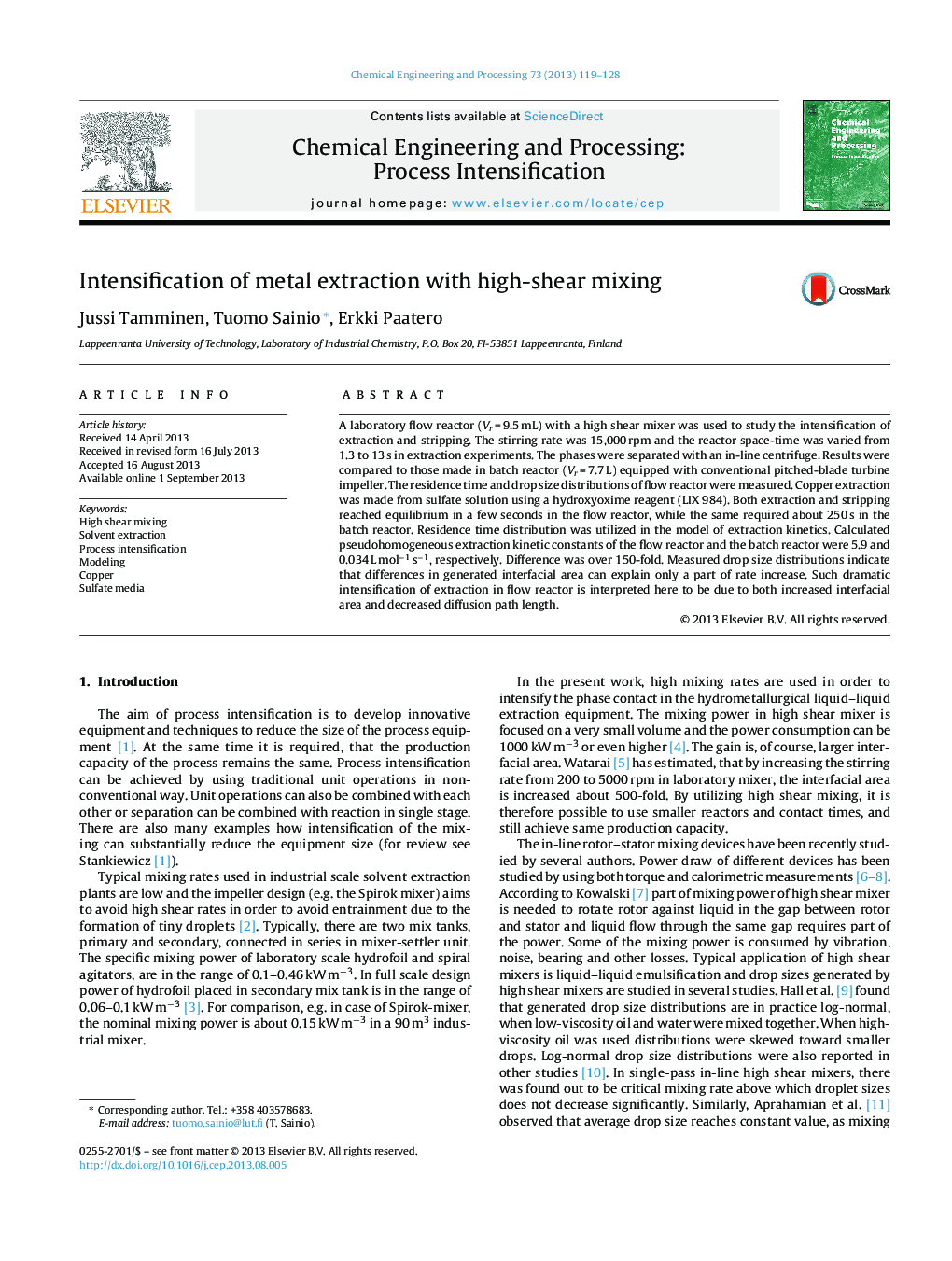| Article ID | Journal | Published Year | Pages | File Type |
|---|---|---|---|---|
| 687084 | Chemical Engineering and Processing: Process Intensification | 2013 | 10 Pages |
•Copper extraction was intensified using high-shear mixing in a flow reactor.•Residence time distributions of flow reactor were used in kinetic model of extraction.•Calculated kinetic constant was over 150-fold larger in flow reactor than in batch.•This is due to increased interfacial area and decreased diffusion path length.
A laboratory flow reactor (Vr = 9.5 mL) with a high shear mixer was used to study the intensification of extraction and stripping. The stirring rate was 15,000 rpm and the reactor space-time was varied from 1.3 to 13 s in extraction experiments. The phases were separated with an in-line centrifuge. Results were compared to those made in batch reactor (Vr = 7.7 L) equipped with conventional pitched-blade turbine impeller. The residence time and drop size distributions of flow reactor were measured. Copper extraction was made from sulfate solution using a hydroxyoxime reagent (LIX 984). Both extraction and stripping reached equilibrium in a few seconds in the flow reactor, while the same required about 250 s in the batch reactor. Residence time distribution was utilized in the model of extraction kinetics. Calculated pseudohomogeneous extraction kinetic constants of the flow reactor and the batch reactor were 5.9 and 0.034 L mol−1 s−1, respectively. Difference was over 150-fold. Measured drop size distributions indicate that differences in generated interfacial area can explain only a part of rate increase. Such dramatic intensification of extraction in flow reactor is interpreted here to be due to both increased interfacial area and decreased diffusion path length.
